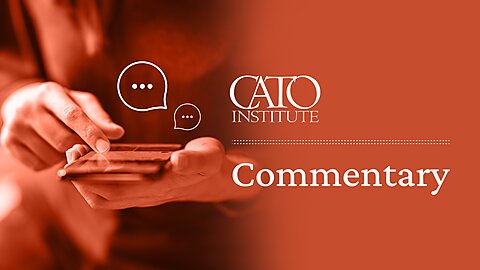President Trump and many of his supporters are worried about indoctrination in public schools, especially on matters of race and gender, and their concerns are not without justification. Yesterday, the president issued an executive order (EO) to take that on directly. At the same time, he issued another order focused on the key to ending government indoctrination: “Expanding Educational Freedom and Opportunity for Families.” Unfortunately, both orders walk the edge of violating the Constitution, including by delivering Trump’s preferred brand of indoctrination.
Indoctrination Order
First and foremost, the indoctrination order targets the teaching of what have come to be known as “divisive concepts,” which we have seen laid out in several state laws and which originated in the first Trump administration targeting federal workforce training. These include prohibiting teaching such things as “members of one race, color, sex, or national origin are morally or inherently superior to members of another race, color, sex, or national origin” and “the United States is fundamentally racist, sexist, or otherwise discriminatory.”
Importantly, the only concrete thing the order does regarding divisive concepts is require the secretaries of education, defense, and Health and Human Services—in consultation with the Attorney General—to provide the president with an “Ending Indoctrination Strategy” within 90 days of the EO being signed. That said, it seems likely that the departments, by defining all the listed actions in the divisive concepts litany as discrimination, could find justification to investigate and prosecute school districts, administrators, and even teachers.
But even if they can, should they?
Teaching some of the concepts, such as members of one race, color, sex, or national origin being morally or inherently superior to members of another race, color, sex, or national origin, are pretty clearly discriminatory. However, teaching that the United States is fundamentally racist, sexist, or otherwise discriminatory does not discriminate against any student, nor should it be put off limits by Washington. It might be a terribly inaccurate characterization of the country, but the federal government is not justified in prohibiting discussion of ideas just because the president thinks they are wrong.
Then there is the EO pushing “patriotic education.” It does not simply call for reports; it resurrects the 1776 Commission that Trump created at the end of his first administration and calls on it to “promote patriotic education.” Commissioners will not get paid, but taxpayers will foot the bill for the commission’s administrative expenses. And not only does the EO bring back the commission, it says that “all relevant agencies shall prioritize Federal resources, consistent with applicable law, to promote patriotic education” and identifies specific programs as examples of how to do that. Nowhere does the Constitution authorize the federal government, much less the president alone, to “promote patriotic education.”
School Choice Order
While state and local control of public schooling is much better than federal, the only concrete way to avoid government indoctrination is to let families decide for themselves where the money to educate their children will be used. That means school choice, the subject of the second EO. But even though expanding freedom for families is highly desirable, the Constitution must come first.
Like the indoctrination order, the concrete action embedded in the choice order is mainly secretaries reporting on how they might advance choice. There’s no major problem with that, but it is doubtful they will find much that satisfies two constitutional strictures:
The president cannot make law—Congress must do it.
Outside the District of Columbia, the military, and Indian reservations, Washington has no constitutional authority to drive choice.
The choice order tasks the secretaries of defense and the interior with looking for ways that their departments can supply choice to military families and children eligible to attend Bureau of Indian Education schools. These are within the bounds of federal constitutional authority, in the former case through national defense and in the latter through treaty. But the creation of choice programs must be by Congress, which the Constitution empowers to make law.
The order also calls on the secretary of the Department of Health and Human Services to look for ways that “states receiving block grants for families and children from the Department … can use them to expand educational choice and support families who choose educational alternatives to governmental entities, including private and faith-based options.” The Department of Health and Human Services deals with the nation broadly and has no constitutional authority to deliver school choice, through either presidential or congressional action.
Finally, the choice EO appears to task the Department of Education with quickly advancing choice, saying, “within 60 days of the date of this order, the Secretary of Education shall issue guidance regarding how States can use Federal formula funds to support K‑12 educational choice initiatives.” But immediacy might not be the case, because right after that, the order says, “Within 90 days of the date of this order, the Secretary of Labor and the Secretary of Education shall review their respective discretionary grant programs and each submit a plan to the President.”
Congress has not enacted national school choice. At the very least, it would seem a violation of the spirit of separation of powers if the president were to decide that choice could be delivered by Washington regardless. That said, there are funding sources such as the Student Support and Academic Enrichment Program that could perhaps be interpreted as allowing choice payments. But even if the Department of Education could interpret them as Congress allowing choice as a use, the Constitution still gives the feds no authority to govern education. So the right answer is to end the program, not use it to advance the current administration’s preferred policies.
Conclusion
Indoctrination is a major concern with public schooling because public schooling is government schooling—government-funded and ‑run schools. The solution is choice for families. But the federal government, when dealing with either, must first obey the Constitution, and these EOs come dangerously close to failing in that.

